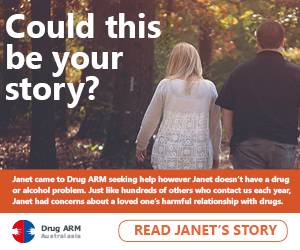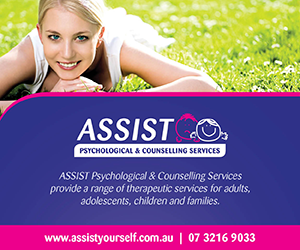Childhood is supposed to be the happiest time of your life, but with reports showing anxiety disorders in Australian children are on the rise, what are parents and children to do? Tiger Webb finds out.
Jennifer Hudson wants you to know is that anxiety in children is normal, to an extent.
‘All children have some amount of fears,’ says Hudson, deputy director of the Centre for Emotional Health at Macquarie University.
The trouble, Hudson says, is working out when that fear turns into something parents should be concerned about.
It’s a tension more and more Australian paerents are dealing with—a recent federal government report shows anxiety disorders are second only to ADHD when it comes to prevalence in Australian children.
‘We don’t want to pathologise normal anxiety—it really is a normal emotion. We wouldn’t be human if we didn’t have it,’ Hudson says.
But when a child is unable to attend the birthday parties of other children or make new friends without anxiety, Hudson would urge caution.
What are the signs of childhood anxiety?
Early awareness of symptoms is important. Hudson says anxiety disorders have been observed in children as young as four and five.
‘If you ask adults with anxiety when it first started, they’ll say, “I’ve been this way all my life,”‘ she says.
One of the signs Hudson says to look out for is separation anxiety.
Most children react strongly to parting with their primary caregiver on the first day of school. Tears or a tantrum at that stage of their life isn’t unusual. But other signs can emerge: ‘When the child begins to stress on Sunday nights before school starts, that’s when you know it’s abnormal,’ says Hudson.
Another sign is something parents might be more familiar with in adults: obsessive-compulsive disorder.
Hudson notes that OCD manifests in children the same way it does in adults, through repetitive activities such as washing hands many times a day or a fixation on checking things in a certain way.
What’s behind the uptick in anxiety disorders in children?
There’s one compelling reason for this new prevalence—anxiety disorders were excluded in previous government reports.
‘Historically, [it’s] thought of as something that’s not a big problem,’ says Hudson. ‘Now, we realise that, yes, this is really important.’
There’s also a genetic component to anxiety disorders. By Hudson’s yardstick, some 30 to 40 per cent of anxiety is heritable, with the rest related to environmental factors.
It might be tempting to blame increased screen time and access to information via the internet that didn’t exist in previous generations—but Hudson doesn’t totally agree with that hypothesis.
‘The presence of screens is not necessarily something that’s going to create anxiety. Social media, unfortunately, is a huge factor. Particularly in primary school.’
What can parents do?
It’s important parents be on the lookout for signs of anxiety, Hudson says, because it can have adverse effects later in life.
‘We just don’t grow out of it. A majority of children, if they have anxiety disorders as a child, are much more likely to have that continue throughout adolescence into adulthood, and then have a range of other mental health problems.’
If a child is worried about going on a school camp, for example, it can be tempting for parents to accommodate their wishes. Hudson cautions against this.
‘What keeps anxiety going is avoidance,’ she says. ‘If you stay away from situations you’re nervous about, the child will never learn that she can handle it, and that actually camp can be fun.
Hudson recommends an approach known as ‘stepladders’, where the child is encouraged to work out what it is specifically about a situation that they find difficult to handle, and to surmount that challenge by building up confidence slowly.
‘Work out what [they’re] ready for and what they can handle,’ she says. To take the school camp example, that could mean encouraging the child to spend more time away from parents in a trusted environment in the lead-up.
Hudson has a few other general tips: ‘Breathing strategies are good as well, and practicing those outside the situation.’
She also advocates a technique known as ‘detective thinking’, where children are encouraged to examine the source of their own emotions in order to confront them.
‘It’s to help kids be more like scientists or detectives—for their thoughts. Use it to keep something in perspective.’
Listen to the full discussion here.
























